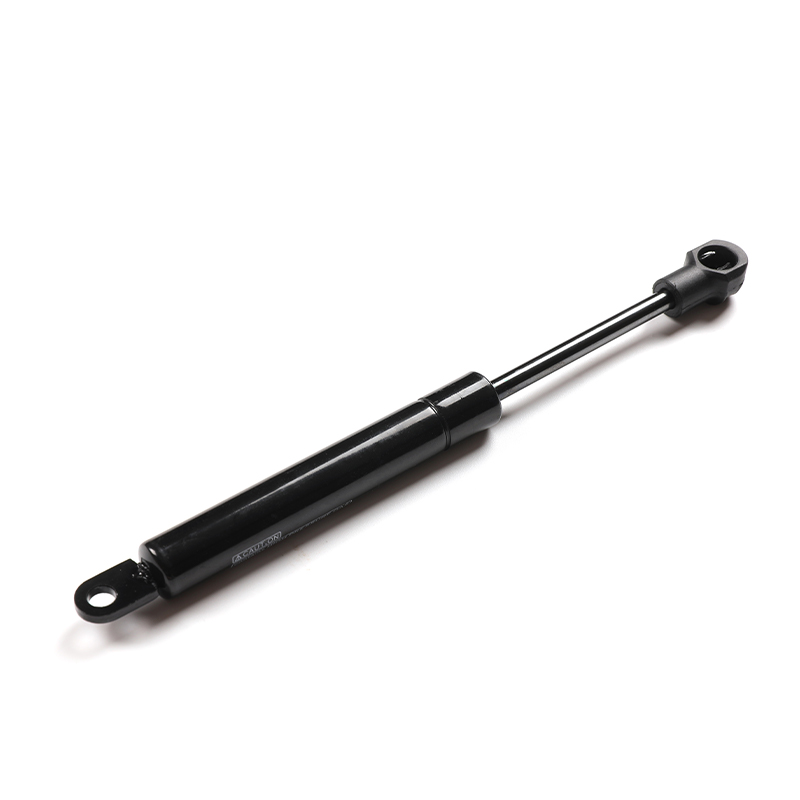Gas spring is a supporting element commonly used in furniture, automobiles, mechanical equipment and medical equipment. It relies on compressed gas (usually nitrogen) to provide smooth assistance, cushioning or positioning functions. It can not only reduce the user's operating burden, but also improve the safety and service life of the equipment. However, due to the variety of models and complex parameters, how to choose the right gas spring according to the actual application has become the focus of many engineers and purchasers.
1. Common types of gas springs
According to the different structures and functions, gas springs can be mainly divided into the following categories:
Free gas spring (Standard Type)
The most common, suitable for opening and closing, lifting applications, such as tailgates, cabinet covers, etc.
Self-locking gas spring (Lockable Type)
It has a locking function and can stay at any position. It is often used in medical beds, adjustable chair backs and other occasions.
Adjustable gas spring (Adjustable Force Type)
Part of the gas can be released through the valve to adjust the internal pressure, which is suitable for the trial installation stage of uncertain loads.
Tension Gas Spring
In contrast to the standard type, it generates force when in a stretched state, and is suitable for special installation directions or space restrictions.
Damping Type Gas Spring
Provides a slow rebound function, suitable for high-end furniture, electric equipment and other occasions that require flexible closure.

2. Key Parameter Reference
To choose a suitable gas spring, you must first understand the following key technical parameters:
Stroke: The distance the piston rod can move, which determines the amplitude of opening or lifting.
Extended Length: The length of the gas spring in a fully extended state, which affects the design size of the equipment.
Force: Expressed in Newtons (N), it determines the weight that can be carried. Usually 50%-70% of the weight of the installed object.
Cylinder/Rod Diameter: Affects the strength and life of the gas spring.
End Fittings: Such as ball heads, fork heads, earrings, etc., need to match the installation interface.
Lifespan (Cycles): High-quality gas springs can usually reach 30,000 to 100,000 cycles.
3. Selection points and steps
When selecting a gas spring, please follow the steps below:
Clear the application scenario and installation method
Is it horizontally installed, vertically installed, or tilted? Is a locking function required? This will affect the type of gas spring selected.
Calculate thrust requirements
It can be simply estimated by weight × arm method.
For complex structures, it is recommended to use CAD or professional calculation tools for simulation.
Determine the stroke and total length
Choose the appropriate stroke and unfolded length according to the opening angle and space restrictions of the equipment.
Select installation accessories and interface methods
Including connector type, bracket form, etc. The interface size must be confirmed in advance when customizing.
Pay attention to the frequency of use and environmental requirements
High-frequency use should choose products with higher lifespan.
Special environments (such as high temperature, humidity, and dust) require stainless steel or corrosion-resistant gas springs.
Consider whether the pressure regulating function is needed
If the thrust is too large after actual installation, a gas spring with a pressure regulating valve can be used for fine-tuning.
4. Examples of typical application scenarios
Car tailgate/engine hood: Use a free-type gas spring, and the thrust should be slightly greater than half the weight of the tailgate to ensure smooth opening.
Office chair/medical bed: Self-locking or damping gas springs are required to facilitate users to freely adjust according to the angle.
Equipment maintenance door/storage cover: Generally, standard or traction type is selected to facilitate quick opening and keeping the open state.
Solar panel bracket: Corrosion-resistant, stainless steel gas springs are required to adapt to outdoor wind and sun.
Although the gas spring is small, the selection has a significant impact. A correctly selected gas spring can not only improve the operating experience and safety of the equipment, but also extend the service life of the overall structure. It is recommended to fully communicate with professional suppliers before selection, provide detailed parameters and application background, and customize solutions if necessary.